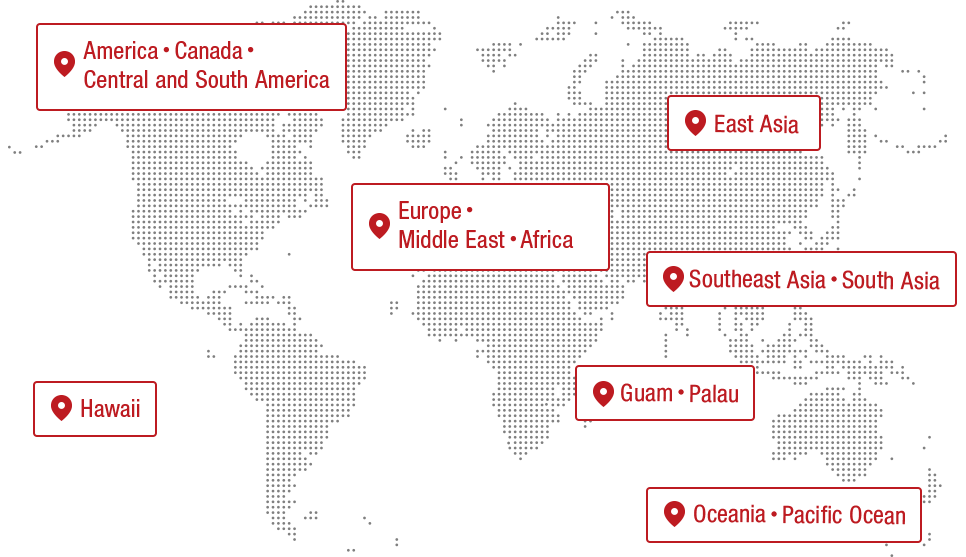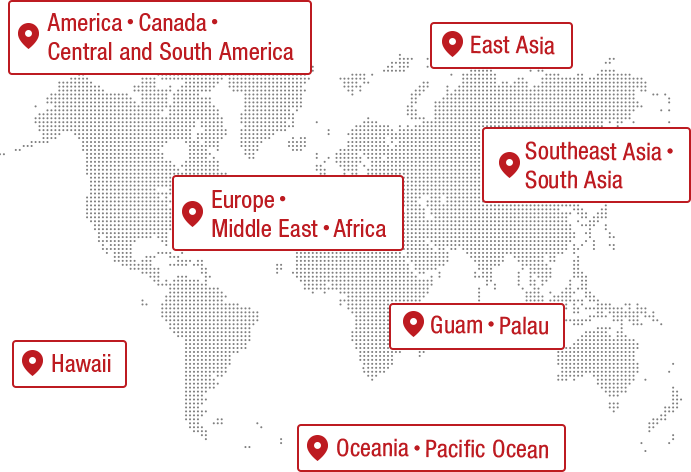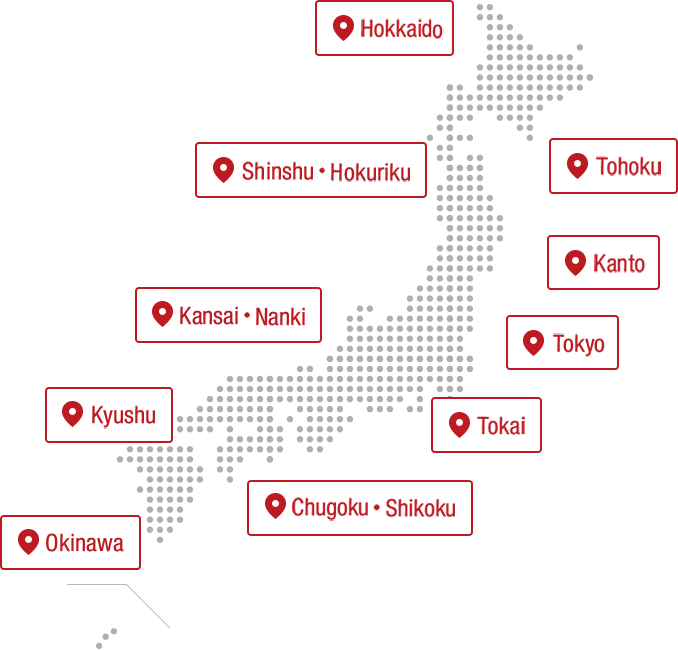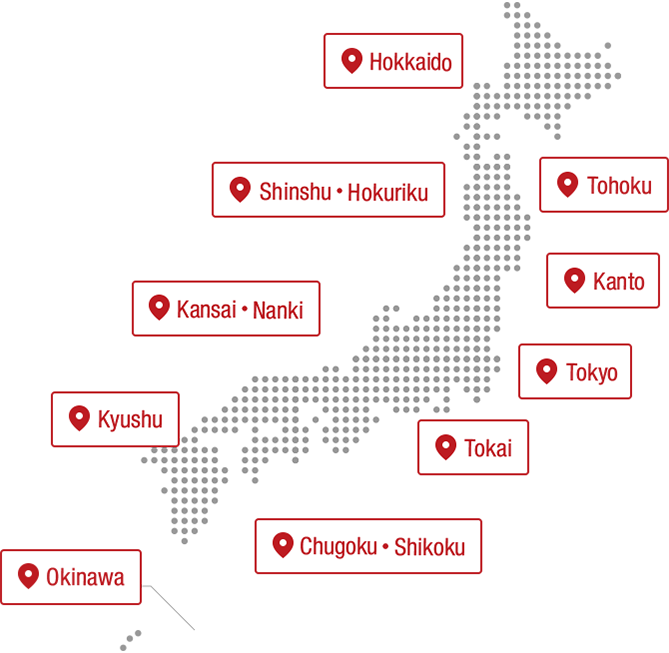
In recent years, the number of "New Wave Okinawa Soba" restaurants, where young owners have come up with various ideas, has been rapidly increasing. On the other hand, the charm of "traditional Okinawan flavor" is also irreplaceable. In this article, we will introduce two restaurants each from the "standard" and "new wave" Okinawa soba. Why not go on a trip to experience the richness of Okinawa soba culture in a delicious and fun way?
*Technically, this name only applies to the main island of Okinawa and its surrounding areas; in the Yaeyama Islands there is "Yaeyama soba," and in Miyako Island there is "Miyako soba," and in fact, each has evolved with different noodle shapes and soup flavors.
*Prices include tax.
Representative of new wave: "STAND EIBUN"
First, we headed to the Tsuboya area, which has remained the center of Okinawa's traditional pottery (Yachimun) to this day, since the royal court gathered and housed potters during the Ryukyu Kingdom era. In addition to traditional items, the area is dotted with trendy shops and galleries, such as GARB DOMINGO, a select shop that mainly sells pottery made by modern Okinawan artists, and LIQUID SHOP, which sells unique alcoholic beverages such as craft rum and gin, making it a town where Okinawan standards and new waves coexist.

STAND EIBU
"OKINAWA SOBA EIBUN" has been capturing the hearts of tourists and Naha residents in recent years. Since its establishment in 2016, its taste and originality have earned it a reputation, and it has quickly become so popular that there is always a line of more than 10 people waiting. In 2022, the second store, "STAND EIBUN", opened. In contrast to the first store, which has pop illustrations adorning the exterior walls, this store has an impressive linear and cool exterior.
The store's minimalist interior, with white walls and a metallic counter, serves craft beer and has a corner dedicated to selling T-shirts and seasonings, making it a store designed with modern city dwellers in mind.


At EIBUN, you can enjoy a wide variety of menu items, from traditional Okinawa soba to creative soba. All of them are appealing, but the one we would like to introduce here is the "Cold Jelly Sauce Bukkake Mazesoba" (980 yen), which stands out as being particularly unique.

"Cold jelly sauce mixed soba" (980 yen)
First of all, you will be captivated by the vivid sky blue bowl that reminds you of the sky and sea of Okinawa. The flavor is based on a sweet and spicy soy sauce sauce, and the soup made with chilled bonito stock has an exquisite balance of richness and freshness. After sweating in the Okinawan heat, you want to eat something energizing, but not too heavy... This will seep into your body.
On top of that is a sour jelly sauce and pork, which is an essential part of Okinawa soba. It's also worth noting that while pork belly is usually served in cubes, this one comes in a bowl. The sour jelly and the pork belly is well-seasoned with a sweet and spicy flavor. The texture and flavor vary greatly within the same bowl, making it a fun dish to eat.
The chewy, curly noodles are perfect for soaking up the unique toppings and soup. Cold dishes come with a small bowl of seaweed soup, a nice touch for those who think, "It looks delicious, but it might make me cold..." This is one reason why the restaurant has become so popular in the blink of an eye.
STAND EIBU
| address | : | 1-1-18 Tsuboya, Naha City, Okinawa Prefecture |
|---|---|---|
| access | : | Take the Yui Rail from Naha Airport "Naha Airport Station" → Get off at "Makishi Station" (about 17 minutes) → Walk to STAND EIBUN (about 12 minutes) |
| phone | : | 080-7178-1187 |
| business hours | : | 11:00~16:00 |
| Closed Day | : | Wednesday |
| web | : | https://sobaeibun.okinawa/ |
Shuri Soba: A look into Okinawa's history and memories
After enjoying the spirit of this representative of the new wave of Okinawa soba, we went back to our roots. In search of traditional Okinawa soba, we headed to Shuri, which once flourished as the center of the Ryukyu Kingdom. Unlike Naha, where diverse cultures mix together, the orderly streets still evoke the pride of the ancient capital.
Shuri Soba, located in a residential area, is a place where you can fully experience the tranquility and pride of the town of Shuri. It is a popular restaurant with more than 20 customers lined up even before it opens.

Shuri Soba
The building was originally a gallery, and the minimalist concrete structure matches beautifully with the elegant limestone stonework that is representative of the geology of southern Okinawa.

The interior of the restaurant is beautiful, with the contrast between Okinawa's brilliant light and the shadows it casts.

The interior of the store is decorated with antique Yachimun pottery vases and dishes, as well as paintings of old Shuri landscapes, proving once again that the store is deeply rooted in the local community.

The long-awaited "Shuri Soba: Medium" (500 yen) has arrived. Its appearance is one that perfectly suits the word "elegant". They are also particular about how the food is served, always making sure that the meat is placed at the front. Looking at the side of the bowl, the words "Shuri Soba" are written below the meat. The fact that the restaurant's name is always placed facing the customer shows the pride of being at the heart of the dynasty.

"Shuri soba: medium" (500 yen)
The main dish, flat noodles, are impressive for their firmness rather than their elasticity. The uneven thickness of handmade noodles gives them a rich taste, texture, and throat feel. The light and elegant bonito soup brings out the best in the noodles, giving them a rich flavor that is hard to imagine from their simple appearance. Another point is that they are topped with pickled ginger, which has a milder flavor, rather than the usual pickled ginger.
Other toppings include kamaboko (fish cake), melt-in-your-mouth pork belly, and red meat (bottom left in the photo), which has not been used much recently. Red meat has little fat, and you can enjoy the contrast between its sweet and spicy flavor and firm chewiness.
Shuri Soba opened in 1994. When a famous Okinawa soba restaurant called "Sakuraya" that had been in business in the same Shuri area from 1951 to 1993, just after the war, closed, the owner, Yasushi Nakata, who had been familiar with the taste since he was a child, decided to take over the noodle-making techniques.
Sakuraya was founded by a woman named Tsuru Niizato, who lost her husband in the war. Not only Okinawa soba, but many restaurants at that time were started by women with nothing but the clothes on their backs in order to earn cash income.
The memories of Nakata himself, the memories of the women who lived strong lives after the war, and the memories of the restaurant that has watched over the changing scenery of Shuri and Okinawa through the times. The taste of Shuri soba is a unique taste that has been preserved by the happy encounter of the memories of the people who lived on this island.
Shuri Soba
| address | : | 1-7 Akadacho, Shuri, Naha City, Okinawa Prefecture |
|---|---|---|
| access | : | Take the Yui Rail from Naha Airport "Naha Airport Station" → Get off at "Shuri Station" (about 28 minutes) → Walk to Shuri Soba (about 5 minutes) |
| phone | : | 098-884-0556 |
| business hours | : | 11:30-14:00 (closes when sold out) |
| Closed Day | : | Thursday and Sunday |
| web | : | https://shurisoba.live-web.jp/ |
[Knowing these facts makes it even more delicious! Tips column]
Sakuraya was run by Tsuru Niizato. During the war, it became difficult to obtain ash from banyan trees and deigo trees, which are an important ingredient in Okinawa soba. Even after the reconstruction, the noodle binder was replaced by kansui, making it impossible to eat true "traditional Okinawa soba." However, this shop stubbornly continued to follow its recipe. Tsuru may have entrusted the former scenery of Okinawa, which had lost everything in the war, to his noodles.
"Papaya and Subui" is full of unique and healthy ingredients
After enjoying a cup of coffee that gives you a sense of its deep history, we headed back to downtown Naha. We walked up a gentle slope from the Prefectural Office intersection at the end of Kokusai Street, which is always bustling with tourists, and came across a shop with an impressive sign.

Okinawa soba with papaya and soubui
Okinawa Soba Papaya to Subui is a new wave among new waves, having opened in Uruma City in 2022 and relocated to the prefectural office in 2023. The name of the restaurant, Subui (also known as Shibui), refers to winter melon. Although the name contains the word "winter," winter melon is actually in season in the summer, and is resistant to heat, making it one of the most popular agricultural products in Okinawa.

When you step into the store, you'll be greeted by a giant winter melon. Winter melons in Okinawa grow really big.

The restaurant is located along an open street and has ample sunlight coming in from two directions. The interior is filled with greenery and has a natural atmosphere. The nostalgic "elementary school desks" used as dining tables also match the space strangely well.

"Papasub Soba" (880 yen)
The Papa Soba is characterized by its healthy soup. It is made with shiitake mushroom stock, which is rare for Okinawa soba, and is made without any additives, giving it a very refreshing taste.
A representative dish is the "Papasubu Soba" (880 yen). As the name of the restaurant suggests, you can enjoy the contrast between the crispness of the thinly sliced papaya and the fluffy texture of the winter melon that has been simmered for a long time and soaked in broth.

Thinly sliced kelp also plays an important role. Highly regarded as a health food, Okinawa was the number one consumer of kelp in Japan for a long time until the end of the Showa era. It appears in a variety of traditional Okinawan dishes, such as the New Year staples Kubuirichi (stewed kelp and pork) and Jyushii (rice cooked with other ingredients).
Thanks to the outstanding presence of kelp, the Papazbu Soba has a fun texture that is crisp, fluffy, slimy, and crunchy. It is a gentle bowl of soba where you can enjoy a variety of textures, but the whole is beautifully harmonious. The hand-kneaded curly noodles have just the right amount of elasticity, so you can eat it easily even when you are tired. If you drink the refreshing soup to the last drop, you will feel very healthy.
Okinawa soba with papaya and soubui
| address | : | 1-10-1 Matsuo, Naha City, Okinawa Prefecture |
|---|---|---|
| access | : | Take the Yui Rail from Naha Airport to Naha Airport Station → Get off at Prefectural Office Station (about 13 minutes) → Walk to Okinawa Soba Papaya to Subui (about 6 minutes) |
| business hours | : | 11:00~15:00 |
| Closed Day | : | Irregular holidays |
[Knowing these facts makes it even more delicious! Tips column]
The kelp that is so strikingly used in Papasbu is in fact not harvested at all in Okinawa. During the Edo period, it travelled all the way from Ezo (present-day Hokkaido) via the Kitamae-bune route that was popular during the Edo period, to Satsuma (present-day Kagoshima Prefecture), and from there to Ryukyu, and even now it is 100% produced outside the prefecture. The fashion-conscious people of Naha probably jumped at the chance to get their hands on this rare product from the faraway north at the time. What we now call "tradition" may have always started as a "new wave."
"Tatsumi Soba" - a place you'll want to return to again and again
Our last stop was Tatsumi Soba, located on New Paradise Street, one block behind Kokusai Street.

Tatsumi Soba
This shop has a noodle factory called "Karimata Noodle Factory" next door. There are many noodle factories of all sizes all over Okinawa, and they sell noodles directly or wholesale to supermarkets, but the combination of a store and a noodle factory like this, where you can eat freshly made noodles on the spot, is still attractive.

The interior of the shop, with its counter and rows of tables, has an unpretentious, down-to-earth atmosphere. When you come to a shop with the feel of a "local, privately owned shop," you feel a sense of relief, as if you've "come home." The large menu photos on the wall are written in Roman letters so that foreign tourists can easily understand.

Tatsumi soba (940 yen)
I ordered "Tatsumi Soba" (940 yen). The size of the meat is obvious at a glance. It is full of volume with two types of soki (pork ribs with bones), cartilage and seared, and topped with sanmai pork. Traditional Okinawa soba sometimes contains tamagoyaki, but it is quite innovative to see it served with cabbage. The freshly made noodles are slightly thin and straight, with a smooth texture that slides down the throat easily. The soup is made from bonito and pork bones, giving it the taste of a good old Okinawan diner. A squeeze of the koregusu (a seasoning made from awamori and island chili peppers) on the table instantly adds a gorgeous flavor.
Naha City is undergoing redevelopment and the scenery in the center is changing rapidly, but just having a shop like this there makes you feel at ease. It's a charming shop that makes you want to head there as soon as you arrive in Okinawa and drop off your bags at the hotel.
Tatsumi Soba
| address | : | 1-4-61 Makishi, Naha City, Okinawa Prefecture |
|---|---|---|
| access | : | Take the Yui Rail from Naha Airport to Naha Airport Station → Get off at Miebashi Station (about 15 minutes) → Walk to Tatsumi Soba (about 7 minutes) |
| phone | : | 098-867-1959 |
| business hours | : | 12:00~13:30、18:00~21:00 |
| Closed Day | : | Wednesday |
We have visited four restaurants, both "standard" and "new wave" Okinawa soba. Although it is simply called "Okinawa soba," each restaurant has a different background and its range is expanding. In a field where there is no correct answer, each restaurant owner puts their aesthetic sense and creativity into it. When you visit Okinawa, be sure to visit various restaurants and find your favorite bowl.
Domestic Discount Fares Skymate
Limited to ages 12 and over and under 25!
Extremely affordable discount fares available for booking from the day of departure (4 hours before departure)
Related article
The contents published are accurate at the time of publication and are subject to change.














